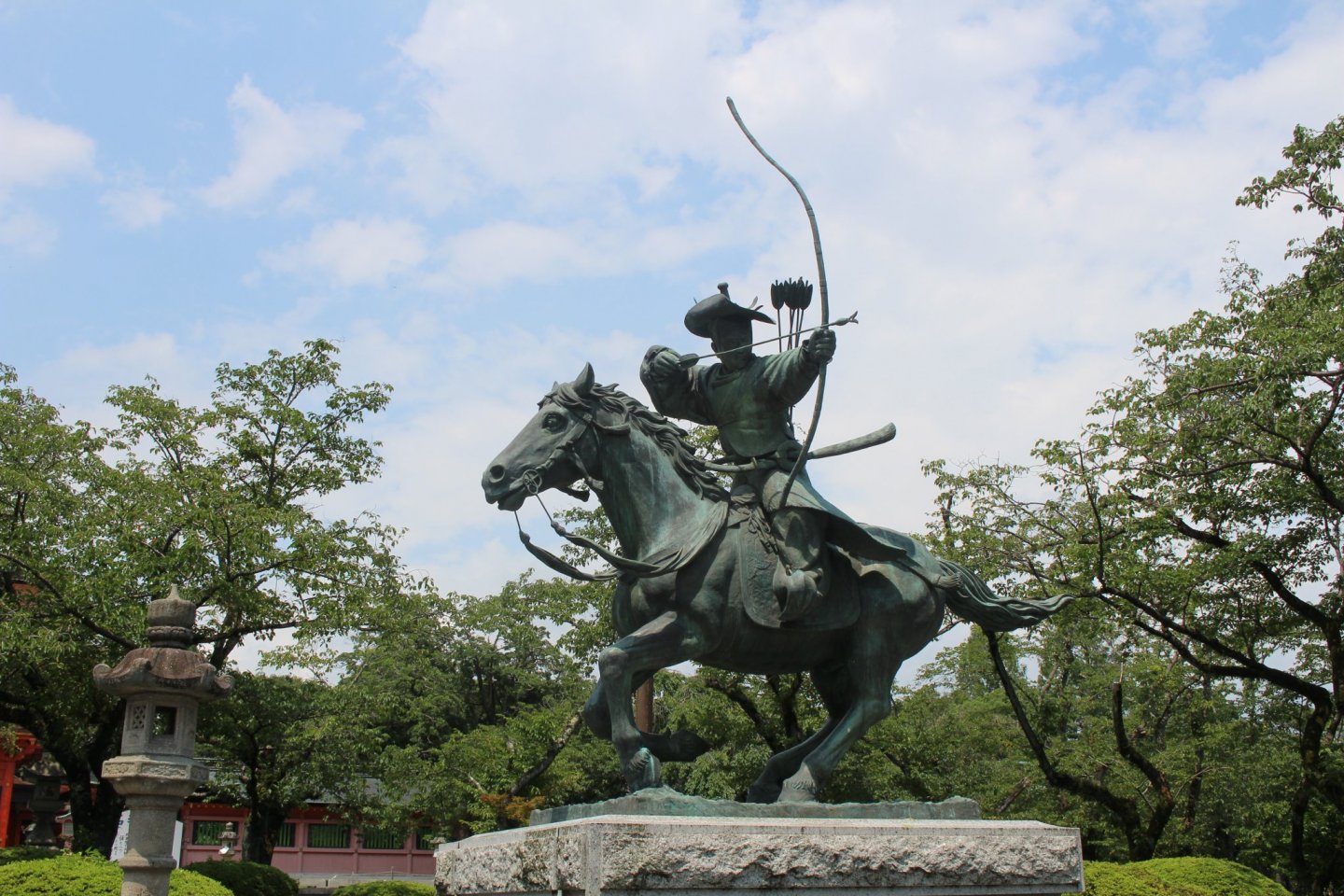When visiting Fujisan Hongu Sengen Taisha, after passing through the torii but before entering the main gates, it’s impossible not to notice the equestrian statue standing on the right. The statue is a monument to the founder of the first shogunate in Japan, Minamoto no Yoritomo.
Located at the base of Fuji-san, the expressively alive statue shows the man in mid-hunt, a hunt that apparently occurred in 1193 and was dedicated to the Fujisan Hongu Sengen Taisha. This hunt became a historical moment and during his rule, his respect for the area saw Minamoto no Yoritomo dedicate more land to the Fujisan Hongu Sengen.

Considering such ancient history is fascinating and even more so when you examine the bas-relief at the base of the statue. It consists of many people in a procession, including shrine priests and servants, noblemen dressed in the outfits and headwear of the time and a few horsemen. If you look close enough, you'll notice that the man who leads the procession wears the same headgear as the statue. Conclusion? Both are Minamoto no Yoritomo. In the background of the bas-relief can be see Fuji-san and Fujisan Hongu Sengen. As far as I can understand, the hunt pictured was a kind of ritual and the whole relief is expressive and ‘live’.

Fujisan Hongu Sengen Taisha holds an annual horseback archery festival called yabusame and is dedicated to Minamoto no Yoritomo's historical hunt. The festival is held from 4-6th of May. An opening ceremony is held on the first day, the actual archery on the second and a closing ceremony on the final day. Some amazing horseback archery is performed before the god on the main day of the festival and afterwards the participants ride over sixty horses. Participants include the priests of the shrine and even children! People wearing samurai clothing and armour march in the parade along the city's main streets creating quite an impressive sight.































